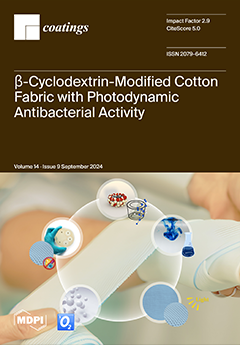Ga
2O
3 has received increasing interest for its potential in various applications relating to solar-blind photodetectors. However, attaining a balanced performance with Ga
2O
3-based photodetectors presents a challenge due to the intrinsic conductive mechanism of Ga
2O
[...] Read more.
Ga
2O
3 has received increasing interest for its potential in various applications relating to solar-blind photodetectors. However, attaining a balanced performance with Ga
2O
3-based photodetectors presents a challenge due to the intrinsic conductive mechanism of Ga
2O
3 films. In this work, we fabricated amorphous Ga
2O
3 (a-Ga
2O
3) metal–semiconductor–metal photodetectors through capacitive coupled plasma assisted magnetron sputtering at room temperature. Substantial enhancement in the responsivity is attained by regulating the capacitance-coupled plasma power during the deposition of a-Ga
2O
3. The proposed plasma energy generated by capacitive coupled plasma (CCP) effectively improved the disorder of amorphous Ga
2O
3 films. The results of X-ray photoelectron spectroscopy (XPS) and current-voltage tests demonstrate that the additional plasma introduced during the sputtering effectively adjust the concentration of oxygen vacancy effectively, exhibiting a trade-off effect on the performance of a-Ga
2O
3 photodetectors. The best overall performance of a-Ga
2O
3 photodetectors exhibits a high responsivity of 30.59 A/W, a low dark current of 4.18 × 10
−11, and a decay time of 0.12 s. Our results demonstrate that the introduction of capacitive coupled plasma during deposition could be a potential approach for modifying the performance of photodetectors.
Full article





